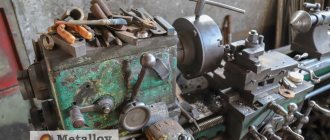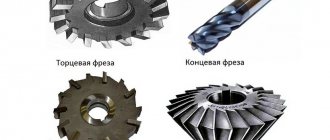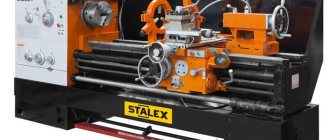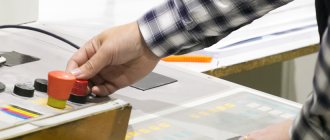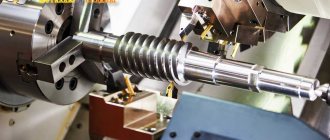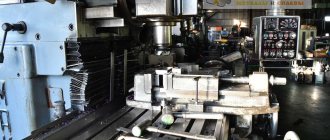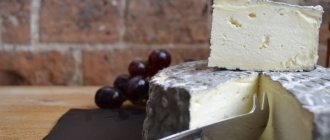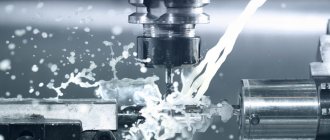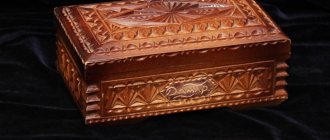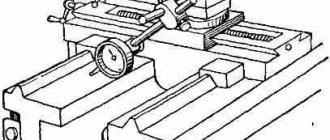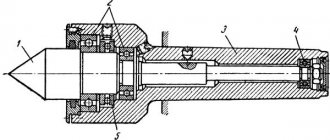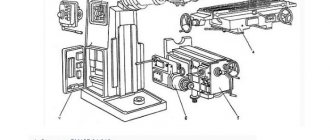Purpose of the 6Р82 machine
The purpose of the 6P82 milling machine is stated in its passport.
These machines were developed to perform various types of milling work on them. They can be milled using various types of cutters. The technical characteristics of the machines provide for the expansion of their potential capabilities. To do this, you should use additional equipment and accessories that may be supplied with the machine.
The machines are used at enterprises in various industries, from small workshops to large engineering giants. They are very high-tech and are capable of processing parts with high quality, and most importantly, with high precision.
The 6P82 milling machine, the technical characteristics of which enable the user to easily configure it to operate in automatic or semi-automatic mode, and, therefore, this makes it possible to use such a unit to complete a single automated line.
Aggregate machines
Aggregate machines provide for simultaneous one-sided or two-sided processing of holes.
Modular machines, fully meeting their technological purpose, like special machines, can at the same time be manufactured by the most productive and economical methods in comparison with previous designs of similar machines. This is explained primarily by the fact that their normalized and unified nodes (Fig.
Aggregate machines are the main prerequisite for the creation of automatic lines of multiple reversibility with maximum concentration of technological operations.
Aggregate machines can be easily reconfigured depending on the conditions and requirements of the technological process. In Fig. 74 shows individual layout diagrams of drilling aggregate machines.
Aggregate machines ensure the interchangeability of processed parts, which is one of the prerequisites for large-scale and mass production. Cutting tools on aggregate machines operate at pre-calculated cutting conditions, which improves the operation of the tools. Hydraulic, pneumatic and electrical drive and control systems are widely used in machine tools.
Aggregate machines are special machines that are assembled from standardized units and parts and are complemented by installation devices for coordinating manufactured parts and cutting tools. Units of aggregate machines have been unified: power heads, rotary positioning tables, bases, frames, columns, slides, feed drives, spindle boxes, tilters.
Aggregate machines are intended for use in large-scale and mass production to perform drilling, boring, thread milling and, less commonly, milling and other work. Products on such machines are processed simultaneously with many tools on one, two or several sides, depending on the configuration of the part that is installed and secured on the machine table. Therefore, modular machines are characterized by higher productivity than universal machines. When processing products on aggregate machines, the number of workers and production space are reduced for the same volume of production.
Aggregate machines are intended for use in large-scale and mass production to perform drilling, boring, threading and, less commonly, milling and other work. Products on such machines are processed simultaneously with many tools on one, two or several sides, depending on the configuration of the part that is installed and secured on the machine table.
| Layout diagram of an aggregate machine from normalized components. and details. |
Aggregate machines are manufactured for processing a specific one or several products (Fig. 2). Aggregate machines are usually assembled from standardized parts and assemblies, constituting 70 - 80% of the total number of assemblies in the machine.
Aggregate machines are increasingly used in series production. Their production is growing from year to year. In many branches of mechanical engineering (pump engineering, textile engineering, engine building, agricultural machinery), the technical progress of production is largely due to their widespread use in the manufacture of labor-intensive parts. Aggregate machines can be effectively used for group processing of structurally and technologically similar parts. Recently, modular machines with PU have appeared, which characterizes their intensive penetration into mass production.
Aggregate machines help smooth out the contradiction between the rapid development of modern production and the increasing replacement of manufactured products with more advanced ones.
Aggregate machines used in heavy engineering are assembled from standard gearboxes or power heads and differential boring bars; In mass production, special machines are used.
Aggregate machines can be used when processing even a small number of parts, since their production is reduced only to installation work; the presence of universal power heads and differential boring bars makes it possible to quickly mount such machines directly on slab floorings.
Aggregate machines with self-propelled power heads: a – one-sided with a horizontal head; b – three-sided with horizontal heads; c – double-sided with inclined heads: / – working device; 2 – middle part of the base; 3 – self-propelled power head; 4 – skids; 5 – base; 6 – corner stand.
The principle of machine aggregation
The principle of aggregation is based on the fact that instead of developing all the units when designing a new machine, previously developed units are used, constructing a new machine from them. To do this, several similar units (units) of different sizes and power (called normalized or unified) are first developed, allowing the design of a machine quite well suited to the technological process of processing the part. In addition, they try to make these units self-acting, providing each with its own engine. Aggregate special machines have significant advantages over other machines:
- the ability to create equipment using the most advantageous technological process When it is planned to use modular machines, first they develop a process for processing the part, and then to carry out this process they assemble machines from ready-made components;
- multi-tool processing, which dramatically increases productivity;
- the ability to perform a variety of operations on one machine;
- allow you to constantly improve the equipment itself, since it is not the entire machine that needs to be modernized, but only the component that is outdated;
- favorable conditions are created for major repairs of machine tools;
- the reliability of equipment created from proven normalized components increases;
- special machines are assembled from serial components, which reduces their cost
Along with the advantages, modular machines also have disadvantages , which in recent years have greatly reduced the demand for these machines, even for mass production:
- for a new part, even slightly different from the previous one in the processed surfaces, it is necessary to make a new special machine;
- The machines are quite expensive and have a narrow scope of application - mass production.
To eliminate these contradictions, it is necessary that special machine equipment meet three main conditions:
- made it possible to make changeovers for processing different parts at a fairly high productivity (this is the most important thing, because the cost of fixed assets makes up a significant share of the cost of production);
- had a short design and manufacturing time;
- had a low cost and quick payback.
In general, modular machines meet these conditions under certain production conditions.
Basic parts of modular machines
The beds and racks of modular machines belong to the basic units (Fig. 10). A rotary dividing table is installed on the frame 2. Side frames 5 are attached to its side edges. A loading position is organized at the front edge, and one of the side edges (for example, cut as a chamfer) is used for removing chips. A power table is placed on a rack 4 mounted on a stand 3 in a vertical position. The rack has a counterweight that serves to balance the moving units: table, spindle box with thrust square 1 and tool adjustment, as well as the jig plate. On the side frames 5, power tables, power heads or vertical racks are installed. On top of the side frame there are two plates for basing these units. The side frame is attached to the middle frame using a flange. The frame and rack are made of cast iron or welded from rolled steel sheets.
Lathes
Soviet machine tool factories (Ulyanovsk, Lvov, Gorkovsky, Dmitrovsky) produced a fairly wide range of program-controlled units, which are still in use at industrial enterprises.
- 16A20F3. This domestic machine can be found at most machine-building enterprises. The device is equipped with the control program “Electronics NTs-31”. The spindle mechanism has three rotation speeds. A special sensor, together with the drive, allows you to cut threads.
- MK6713S5. It is considered a high-precision lathe equipped with a cross-shaped support. It can work with six cutters simultaneously. The machine is designed to perform the following technological operations: thread cutting, turning, boring, operations with disks.
- In addition to Russian-made machines, workpiece processing is also performed on foreign equipment equipped with CNC. For example, TRENS SBL300. This machine has two spindles. It can process: shafts, flanges, complex workpieces. The versatility of such equipment lies in the ability to perform milling operations.
- Vturn-V760. It differs from other similar products in its spindle mechanism, which is located vertically. The working head has eight positions. A hydraulic twelve-inch chuck is installed. The chips are removed by a conveyor. Automated lubricant supply. There are various tool holders. Color display. The control system is Fanuc 0i-T.
- LS360 CNC. The bed of this lathe is installed at a certain angle. The equipment can process non-ferrous metals as well as stainless steel. The Japanese Yuken hydraulic mechanism increases the reliability of the machine. Lubrication is supplied automatically. The working head has 8 positions, which allows you to process parts of various configurations.
- 5
- 4
- 3
- 2
- 1
How does a CNC drilling machine work?
Drilling method on a CNC drilling machine. Technical characteristics of the equipment. Types of machines.
A drilling machine with a CNC system differs from model machines, which are controlled by a special program of processing parameters. Thanks to the equipment, the following types of parts are processed:
- flanged;
- hull;
- planar.
Thanks to this, cutting tools for different purposes are used. Many machines with a CNC system use a high-precision complex of drilling and milling operations with various workpieces.
Unified units of aggregate machines
Unified or normalized units of aggregate machine tools are units whose designs are developed before a specific machine is designed. These units can be used in machines of different designs. These include (Fig. 2) a frame 7, a rotary dividing table 6, on which fixtures and workpieces are installed, and power headstocks 3. To install power heads on the machine, side frames 5, racks 4, and spacer plates are used. When multi-spindle machining of holes or when milling planes, drilling and milling attachments are attached to the power heads. The control of the machine is concentrated on the remote control, and all electrical equipment is located in the cabinet. Special units are constructed from normalized assembly units, arranging them as required by the design of the workpiece. The type of standardized units includes several hundred items of more than 2,500 designs and standard sizes and amounts to 75. .80% of machine components.
Rice. 2. Components of the aggregate machine: 1 - side frame; 2 - multi-spindle box; 3 — power headstock; 4 - stand; 5 — bed-stand; 6 — rotary dividing table; 7 — central bed; 8 - single-spindle boring head; 9 - power table
Aggregate machines: classification and layout
Aggregate machines are special machines consisting of normalized units (units). Such machines are used for multi-tool processing of workpieces, often body parts, in large-scale and mass production. Aggregate machines are widely used in factories producing cars and agricultural machinery. On aggregate machines, drilling, boring, threading and, less commonly, plane milling are performed. There are also aggregate machines that perform basic assembly work.
The advantages of the practical use of modular machines are as follows: a) a significant reduction in the design and manufacturing time of the machine; b) high productivity due to multi-tool processing and a minimum number of auxiliary movements; c) relatively low cost of manufacturing the machine; d) reduction in the cost of processing product blanks due to high productivity and ease of maintenance of the machine; e) facilitating the automation of the processing cycle; f) the possibility of using part of the units when changing the production facility.
Below is the classification and typical layouts of modular machines . Aggregate machines are divided into the following types: single-sided machines and multi-sided machines.
What is the purpose of a metalworking tool?
Grinding tools for metalworking are abrasive grains bound with special binding materials. The shape of the grains is distinguished by the presence of sharp edges of different sizes, which, when touching the metal, are capable of removing layers of a certain thickness from it.
Grinding tools include: bars, sandpaper, fabrics with special coatings, wheels.
Cutters, cutters, drills, taps, and broaches can be used for cutting. They are selected in such a way that their hardness is higher than that of the materials being processed.
Cutting metal 4–7 mm thick is performed with metal scissors or a jigsaw, or a hacksaw. It is convenient to cut a layer from 5 mm with a grinder.
Handles, hammers, sledgehammers, and shaped hammers can be used in metalworking or blacksmithing work. Handbrake handles are used to determine the force of impact and indicate the exact location for processing. Sledgehammers are used for cold deformation of workpieces.
Artistic processing of metals can be done with a shaped hammer. It allows you to knock out relief surfaces due to the presence of a curved or wide flat and rounded striker.
The following equipment is used for minting:
- ratchets, hooks for basting relief blanks;
- boboshniks, kanfarniks, loschatniks to create the necessary relief;
- cuts for chasing lines, semicircular or curved lines;
- figured coins (tube, boot, iron, kanfarnik, purushnik, loshchatnik), used to create a series of identical small detailed patterns.
Locksmith workshop with tools
Technological stages of the process
As for the milling technological process, it consists of several sequences that must be followed:
The product is carefully brought from the side of the surface required for processing to the milling cutter, which is rotating at this time. Moving the table away, turn off the spindle so that it does not rotate. After this, you need to set the required cutting depth. Start the spindle. The product, located on the table, is brought together with it to join the cutter.
Processing of metal parts with a cylindrical cutter is carried out when the length of the cutter is 10-15 mm longer than the product, and its diameter is selected based on the cutting thickness and width. When choosing end mills, the work will be done less noisily, since the parts are more securely attached. The productivity of the enterprise will be high when using a set of cutters, since the task is greatly simplified. It all depends on the cutters used, and these are: joint cutters, chisels, two disks at the same time, a set of cutters located on different sides of the workpiece, etc. Milling planes with several end cutters makes several cuts at once, and also eliminates impacts during work.
Modern technologies make it possible to carry out safe processing with a lower percentage of defects on turning and milling machines equipped with CNC systems. In some cases, as when processing parts of increased hardness, it is possible to grind them. They guarantee the production of products with maximum accurate geometric shape, as well as productivity. There are both special purposes and general use, but small parts of the house can be processed with a hand-held electric router. Computer control allows you to set all parameters and perform them as accurately as possible; in addition, it is possible to calculate and create 3D models directly on the machine.
Thanks to modern technologies, milling is becoming increasingly popular in various industries. As for metal, you can use machines to make both aluminum and steel and titanium products. Regardless of the material, milling can be used to make parts for special purposes, exclusive items, jewelry, etc. And only on machines equipped with CNC systems can laser milling of parts of complex shapes be performed. This is expensive, but high-quality processing is possible without pre-grinding.
Popular milling equipment
In Russia, machine-tool enterprises produce milling machines equipped with CNC, which can be found at many machine-building enterprises.
- 6Р13ФЗ. The machine has three coordinates and several high-torque electric motors. The device is equipped with adaptive control and has a control system “N33−2M”. The feed speed of the end mill is 4800 mm/min.
- 6M11FZ. Very easy to maintain milling machine. Programming of work operations is carried out within a few minutes in accordance with the technological process.
- LF66FZ. Milling machine, vertical design, equipped with a cross work table.
- VCenter N-400. Produced in Taiwan. Special horizontal center designed for machining structural steels and aluminum. At the same time, the device’s magazine includes 40 cutting tools. It is possible to increase this number to 90 pieces.
- VCenter-55/7. Equipment for processing non-ferrous metal blanks.
- AX-800. The milling center has five axes and shows high productivity.
Equipment manufactured abroad also remains in demand. The most popular machines are:
- Hurco.
- Zenitech.
- ARES-SEIKI.
- Yangli.
- KNUTH.
Advantages of products from CNC TEHNOLOGY
The company's technical specialists are always up to date with the latest global technical innovations in the field of cutting materials. We offer new principles in industrial production technology:
Minimum material costs per unit of product, high product reliability are an excellent reason to pay attention to our products.
A distinctive feature of the company’s processing equipment is its wide range of functionality:
- CNC milling machines for wood are indispensable equipment in the construction of buildings and structures for various purposes. From architectural models of future buildings to decorative design of front structures of houses and cottages. Various unique home interiors, decorative patterns, furniture sets in the style of the Middle Ages can be easily accomplished using our equipment. There is an opportunity to implement individual art projects.
- Engraving machines with cutting tools for stone . Even the most highly artistic products are possible thanks to the scanning program. It is possible to produce inscriptions, drawings, portraits, bas-reliefs, sculptures...
- The system of automatic adjustment of processing modes and cutting tool cooling allows you to mill any steel and other hard material. Precision manufacturing and high surface finish are guaranteed.
- CNC components allow you to increase the range of equipment functionality.
Advanced Metalworking Techniques
Industrial equipment is constantly being improved. What features are being improved:
- Performance. This is an important factor that affects the payback of the equipment and the profit that can be obtained when working on the machine. Productivity increases as the speed of the mechanisms increases.
- Accuracy. To reduce the number of defects, equipment manufacturers are working on the accuracy of operating mechanisms.
- Durability and wear resistance.
The most common operation in which metalworking machines are used is cutting.
Gas metal cutting
Gas cutting equipment has been used for a long time. It is fully automated and requires minimal effort to operate. The CNC system makes it possible to perform even cuts on metal workpieces, which was problematic due to the presence of the human factor.
Advantages of gas cutting:
- high speed and productivity;
- cheap equipment.
Minuses:
- heat shrinkage of metal after completion of work;
- possible errors in accuracy.
Gas equipment is installed in large enterprises and private workshops.
Gas metal cutting
Plasma cutting
The principle of operation of plasma devices is that the cutting of a workpiece or sheet occurs using a plasma jet. Such metalworking machines have high cutting accuracy and productivity.
Laser processing
Laser machines for metal processing are popular in private workshops and in production. The laser head moves along guides and cuts the workpieces into marked parts. Engraving can be done with a laser beam. Such machines have high precision. They are used to process homogeneous metals and soft alloys.
Grinding
Grinding machines are designed for finishing metal surfaces. Depending on the required removal thickness, the fraction of abrasive wheels or sanding belts is selected. More than one abrasive wheel or belt can be attached to one machine.
Turning
The turning group includes designs that are used to create parts of complex shapes. The working part is a rotating spindle into which the workpiece is fixed. To process a workpiece, it is necessary to secure certain cutters in a support and bring parts to them. Sharp edges cut off the metal layer under the influence of rotation. Can be used for drilling, threading inside and outside workpieces, countersinking, boring holes.
Drilling
Drilling machines are devices with a fixed frame on which one or more spindles are fixed in a vertical position. They can be used for drilling, countersinking, and internal threading. Taps can be used to bore holes in workpieces.
Drilling machine
Waterjet and electroerosive
This is equipment used for cutting metal sheets of any thickness. The principle of operation is that the metal is cut using a thin water jet, which acts on it under high pressure. The disadvantage of this method is low speed. However, it is compensated by high cutting precision.
Gantry metal gas cutting machines
The equipment is intended for production. This is due to the ability to place large metal sheets on the working surface. Their sizes can reach 3×12 meters. The pros and cons of such machines are exactly the same as those of conventional gas cutting.
Manufacturer of aggregate (transfer) CNC machines “BTB Transfer” (Italy)
is the world's leading manufacturer of aggregate (transfer) CNC machines. The company's production program includes several dozen models of two-, three- and multi-axis CNC machines, as well as modular machines, modular machines with bar loading, transfer machines with patented orbital modules, etc. The manufactured machines are designed for processing a wide range of steel parts, cast iron, aluminum, brass, other non-ferrous metals and alloys.
ABOUT
was created in 1987 by two founders who wanted to create a worthy alternative in the field of machine tools based on passion, competence, reliability and innovative ideas.
The rapid growth was made possible by clear and precise goals and a willingness to offer know-how, quality and precision. During its activity, the company has gained a strong position, first in the Italian market, then in the European and global markets.
The company specializes in the design and production of multi-position rotary table machine tools for all those industries where advanced technology and high productivity are of paramount importance.
Initially, the company was engaged in the creation and supply of modular (transfer) machines mainly for Italian manufacturers of sanitary fittings. But then new markets, new development paths and new partners were found. Thus, the equipment produced by the company went beyond Italy.
International expansion requires careful market assessment, continuous improvement of technology and increased production capacity. The company believes in working hard and anticipating market trends rather than trying to keep up with them.
continues to grow, constantly expanding its production capacity.
The company has produced more than 800 machines and production modules, more than 40% of the total supply is carried out to the North American market, 20% of the total supply to the European market.
Technology and Innovation
The company considers innovation and technological leadership to be key success factors. To ensure maximum growth of its production, the company has been dedicating at least 6% of its workforce and annual turnover to R&D for many years. The company's goal is to develop innovative solutions and continuously improve its products.
In its activities, the company does not limit itself to partial improvements in its technical solutions, but also patents numerous technical innovations that allow its customers to radically improve production processes, increasing productivity by more than three times. Among the most important patents are the integrated orbital machining, direct drive table, CURBITER tool changer and hollow vice. In parallel with this, the accuracy of machine tools is increased, which today is measured in microns.
Speed, ergonomics, automation and control software are constantly being improved to reduce tool change times, extend maintenance intervals and simplify operation.
Together with its partners and customers, the company develops customized engineering solutions to meet the requirements of various production processes, while maintaining the highest quality standards. In recent years, the speed of calculations and programming has increased by 50%.
Customer Satisfaction
The criterion for success in the company is always the satisfaction of the needs of its customers and partners, to whom the company fully guarantees the high quality of its products and always strives to establish transparent and long-term relationships with its customers, which provide mutual benefits and development over time.
Thanks to the cooperation that the company constantly develops with its customers, the company has a good understanding of their needs, their desire to improve their projects, their production processes and increase the efficiency of joint activities. Therefore, mutual cooperation is the cornerstone of the company's relationship with the end user, allowing it to develop the enterprise and improve its products, offering customized solutions for customers based on mutual knowledge.
The company's operating concept implies that this kind of close relationship with each client during the implementation of each project benefits all participants, including in the long term.
Service
To fully satisfy the customer's needs, the guarantee of effective technical service is necessary, which is the main concern of the company. No one needs idle technology. In addition to scheduled maintenance, it guarantees fast technical support. First of all, with the help of, which provides remote access to the client’s machine via the Internet. Using the “teleservice” you can find errors, perform maintenance operations, update software and diagnose, and determine the source of the problem. Teleservice is an excellent learning tool because it provides the opportunity to perform daily operations to better understand them.
In addition to being used for diagnostics and quick answers, it guarantees fast support from highly qualified technical specialists. The efficiency of service is also guaranteed by the company's warehouse, where all spare parts for all types of machines are always available. The company believes that equipment reliability should be comprehensive, and its customer should never be left alone with a problem.
Aggregate (transfer) CNC machines in the catalog
Our catalog includes the following machines:
- two-axis aggregate (transfer) CNC machines;
- three-coordinate aggregate (transfer) CNC machines;
- multi-axis aggregate (transfer) CNC machines;
- aggregate (transfer) CNC machines with orbital aggregate units;
- modular aggregate (transfer) CNC machine;
- aggregate (transfer) CNC machines with bar loading;
- key embossing machines;
- machines for cutting and encrypting keys;
- machines for processing keys and lock parts.
Go to the company website ˃˃˃
Modular machine design
The aggregate machine consists of a bed; central and adjustment console; turntable; hydraulic tank; pumping unit; hydropanels; machine electrical cabinet; power table; racks; drill headstock; thrust square; boring panel; thread copier; spindle box; electrical cabinet of power mechanisms; gearboxes; dividing table. Spindle boxes carrying cutting tools are mounted on the power head and on the table with the headstock. The workpieces are fixed in a clamping device, which can be single- or multi-position. There are two main types of clamping fixture: with a horizontal axis of rotation, that is, on a rotary drum, and with a vertical axis of rotation, that is, mounted on a rotary table. Power drilling, milling and other heads are installed on standardized brackets mounted on the guides of a round or rectangular frame. By changing the number of heads and their relative position by rearranging them along the slots of the frame, you can quickly readjust the machine for processing a new batch of workpieces. The workpieces are installed on a round or rectangular dividing table in universal prefabricated or universal adjustment devices. The machines are equipped with a program control device (CNC) located in the control unit.
Aggregate machines
Aggregate machines are multi-tool machines composed of standardized and partially special units. These machines are used in large-scale and mass production. On modular machines you can perform drilling, reaming, countersinking, boring, milling, cutting internal and external threads, and some types of turning. Aggregate machines are mainly used for the production of body parts.
Advantages of modular machines: 1) short design time; 2) ease of manufacture, thanks to the unification of components, mechanisms and parts; 3) high productivity due to multi-tool processing of workpieces from several sides simultaneously; 4) the possibility of reusing part of the units when changing the production facility; 5) the possibility of servicing machines by an unskilled operator.
Aggregate machines (Fig. A.1), depending on the shape, size of the workpiece, and the required processing accuracy, are arranged according to different schemes: single-sided and multi-sided, single-spindle and multi-spindle, single-position and multi-position, in vertical, inclined, horizontal and combined versions.
Processing on single-position aggregate machines is performed at one constant position of the workpiece. Aggregate machines with multi-position rotary tables or drums are designed for parallel-sequential processing of one or simultaneously several small and medium-sized workpieces. At the same time, auxiliary time is reduced to a minimum due to the fact that installation of the workpiece and removal of the workpiece at the loading-unloading position is carried out during processing at other positions.
Typical unified layouts are developed based on the use of unified units; (level of unification 90%). For example, in an aggregate machine with a vertical layout (Fig. A.2) the following are unified: basic parts (frames 1 and 20, stand 9, thrust square 11), power mechanisms (power table 8, and in other types of machines power heads), spindle mechanisms (spindle box 14, boring headstock 19, drill headstock 10), transportation mechanisms (rotary dividing table 3, two-position dividing table 18 for linear movement), main movement mechanisms (gearbox 17), hydraulic equipment (hydraulic tank 4, pumping unit 5, hydraulic panel 6 ), electrical equipment (central and adjustment consoles 2, electrical cabinet of power mechanisms 16, electrical cabinet of the machine 7), auxiliary mechanisms (extension cord 15, threaded copier 13, boring quill 12).
Special mechanisms, such as devices for installing and securing workpieces, have separate normalized elements.
The power mechanisms of aggregate machines are designed to communicate the main movement and feed movement (power tables) to the cutting tools.
The power heads of aggregate machines are designed to perform turning, milling, drilling, boring, thread-cutting, grinding and other work. They usually operate in automatic cycles, for example: 1) fast approach, working feed (one or two), holding on a hard stop (if necessary), quick retraction, stop; 2) rapid approach, working feed, rapid approach, working feed, stop. This cycle is used, for example, when sequentially processing several coaxial holes of the same diameter.
Electric motors are usually used to drive the main movement (rotational) in the power heads of aggregate machines, and cams, screw gears, and cylinders (pneumatic, hydraulic and pneumatic-hydraulic) are used to drive the feed.
Power tables of aggregate machines are designed to install on them spindle units with an independent rotation drive (milling, drilling, boring headstocks, etc.) or devices with a workpiece to be processed to perform work cycles with a straight feed. Power tables of aggregate machines have a hydraulic or electromechanical drive. Tables are produced in six standard sizes, normal and increased accuracy with a maximum traction force of 1-100 kN and a power of 1-30 kW. Hydraulic tables can be vertical or horizontal.
Hydraulic panels of aggregate machines are used to control the operating cycle of the power head. Hydropanels are usually unified. They contain hydraulic devices and devices that perform starting, stopping, changing the feed rate, reverse and other elements of the cycle.
Classification
Depending on the geometric dimensions of the workpieces that can be processed, aggregate machines are classified into three groups. Each group differs in the overall dimensions of the machine, its weight and the design of standardized components.
- Group of small-sized aggregate machines. This is a group of machines with small quill heads. The power of the quill heads ranges from 0.18 to 0.75 kW.
- Group of medium machines. This group of machines has power heads with a flat cam drive. The supply power ranges from 1.1 to 3 kW.
- Large size group. Such machines have hydraulic or electromechanical tables in their design. Such tables are designed to install spindle units on them.
Aggregate machines are also classified according to their design features:
- Based on the number of working positions, classification is carried out according to the following criteria:
- single-position. The design of such an aggregate machine ensures multilateral processing of parts. The workpiece on these machines is fixed in a fixed, stationary position. The power head of the aggregate machine can process the workpiece from one, two or three sides;
- multi-position. On such equipment, workpieces can be processed in a sequential mode. In each mode, processing can be carried out in three-way mode.
- According to the location of the tool. The power head can ensure that the tool is positioned in relation to the workpiece in a vertical, horizontal or inclined position.
- According to the method of fastening and movement of the workpiece, the classification divides machines into the following types:
- machines with fixed tables;
- machines with rotary table. This model allows the table to move around two axes (around axes in the vertical and horizontal plane);
- machines with the ability to move in 1, 2, 3 directions.
Linear modular machines should be included in a separate classification group. These machines can perform drilling, milling and other work, as well as cut internal threads. These machines do not have a fixed base. Structurally, such machines consist of a frame, an electric motor and a working tool holder. The frame is equipped with guides. The workpiece is attached to a special device. Many industrialists demand a high degree of flexibility and perfect performance from their machine tools. These requirements are met by CNC aggregate machines, which belong to a special classification group.
Appearance of the aggregate machine
Slotting, planing, broaching. Other machines. Groups 7, 8, 9
7210
longitudinal planer Ø 900 x 1000, Minsk
7212
longitudinal planer Ø 1120 x 1250, Minsk
7216
longitudinal planer Ø 1400 x 1600, Minsk
7B35
cross-planer Orenburg
7D36
cross-planer Gomel 7D37 cross-planer Gomel
7E35
cross-planer Orenburg
7M36
cross
736 cross-
planer
737
planer Gomel
7303
cross-planer Orenburg
7305
-
planer Orenburg 7307 cross-planer galny Orenburg
7307G
cross planer Orenburg
7307D, 7310d
cross planer Gomel
7A412
slotting Ø 360, Saraktash
7A420
slotting Ø 500, Saraktash
749
cross-planing Orenburg
7402
slotting Orenburg, Baku
7430
slotting Ø 650, Gomel
7D430
slotting Ø 630, Gomel
7M430
slotting Ø 630, Go Mel
7403, 7405
– slotting Ø 630, Gomel
7417
slotting Orenburg
GD200
slotting Ø 500, Gomel
GD320
slotting Ø 770, Gomel
GD500
slotting Ø 940, Gomel
7A510
broaching 98 kN, Minsk
7A534
broaching 250 kN, Minsk
7B55
broaching 100 kN, Minsk
7B56
broaching 200 kN, Minsk
7523
broaching 100 kN, Minsk
7534
broaching 250 kN, Minsk
8A531
vertical band saw Maikop
8B72
hacksaw-cutting Ø 250 Krasnodar
8B66
automatic cutting circular saw Ø 280, Minsk
8B66a
automatic cutting circular saw Ø 280, Minsk
8G240
abrasive cutting Ø 60
8G662
automatic cutting circular saw Ø 280, Minsk
8G6 63
automatic cutting circular saw Ø 285, Minsk
872A
hacksaw- cutting Ø 250 Krasnodar
872M
hacksaw-cutting Ø 250 Krasnodar
8725
hacksaw-cutting Ø 250 Orenburg
N-1
hacksaw-cutting Ø 250 Kaunas
Design features
A design feature is the requirement to increase the reliability of the operation of standardized units and create conditions for quickly reconfiguring the machine to process another part. To ensure the above requirements, all-Union standards for the connecting dimensions of the main components were developed. Work is underway to create quickly reconfigurable aggregate machines using cyclic and numerical program control for rational use in mass production for group processing of parts.
Aggregate machines are most widespread in machining, when the part remains stationary and movement is imparted to the cutting tool. On an aggregate machine, machining can be carried out with tools from several sides, so a significant separation of operations is possible.
Depending on the nature of the operations performed (milling, boring, drilling, trimming ends, threading, etc.), the number of tools working simultaneously on one machine is determined, which can reach 100 or more. Aggregate machines have high productivity, which depends on the duration of the limiting operation and the work cycle.
In the 30s In the USSR, the design and manufacture of modular machine tools began for the first time at the Experimental Research Institute of Metal-Cutting Machine Tools (ENIMS).
Purpose
An aggregate machine is a special semi-automatic or automatic machine, the design of which consists of unified components and mechanisms that are not interconnected by a single kinematic diagram. The scope of application of this equipment covers a group of enterprises with large-scale and mass production. Their main purpose is to process parts that have three-dimensional (box-shaped) shapes. The technical characteristics of modular machines allow them to be used for drilling, threading, milling and many other works related to turning workpieces. Machines of this model are also used in cases where the part being processed is fixed in a stationary state, and the cutting tool is in motion. This makes it possible to simultaneously perform several operations on one part from different sides of the part.
